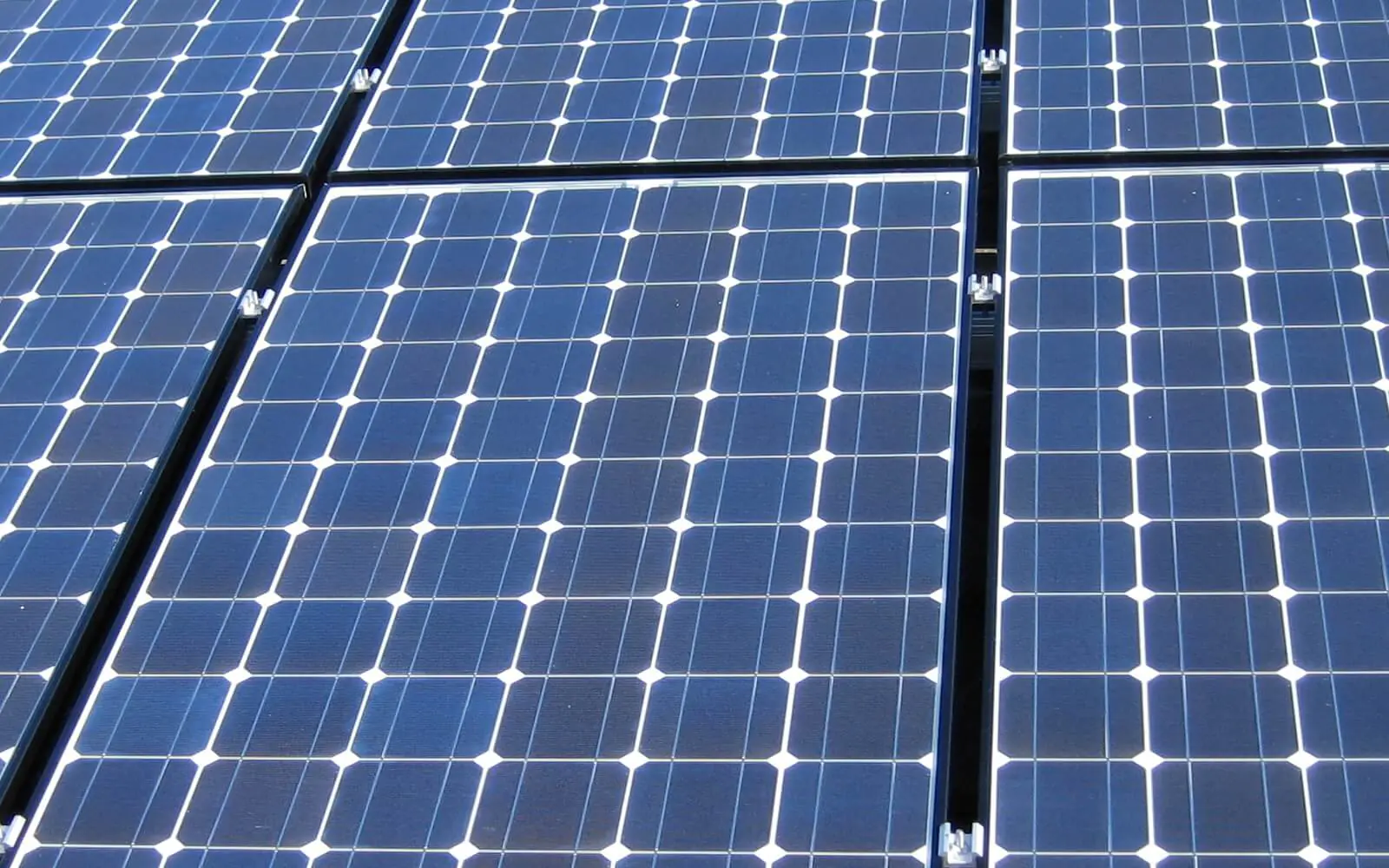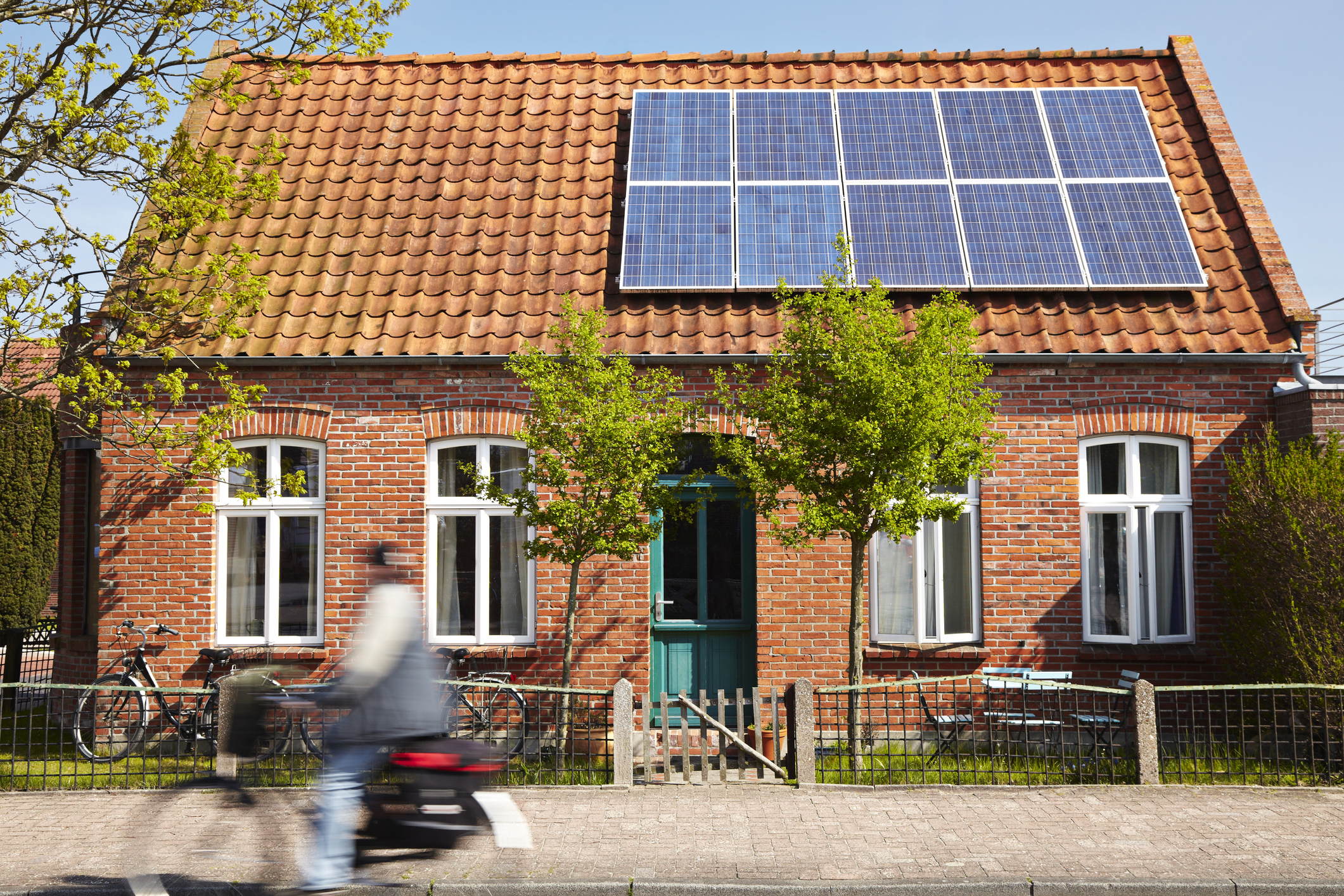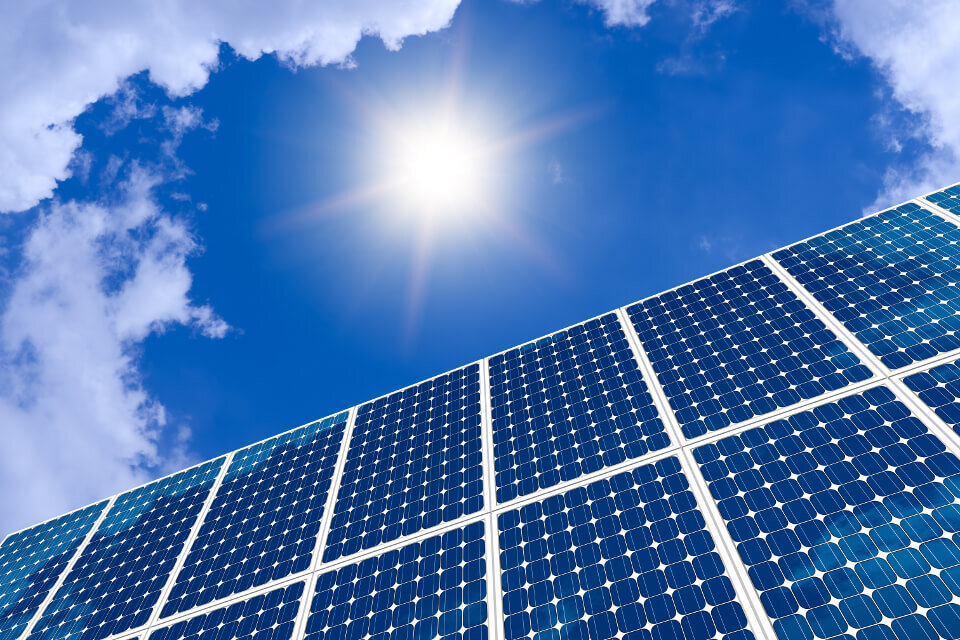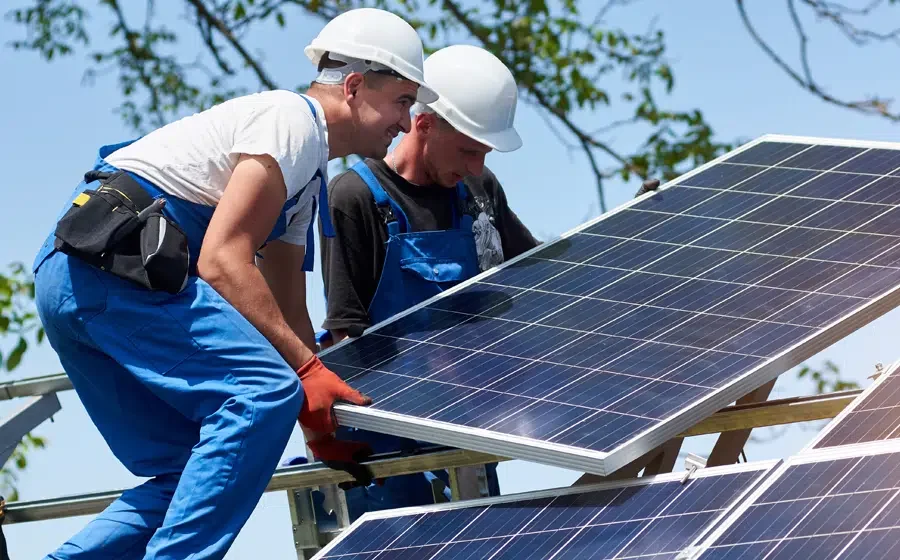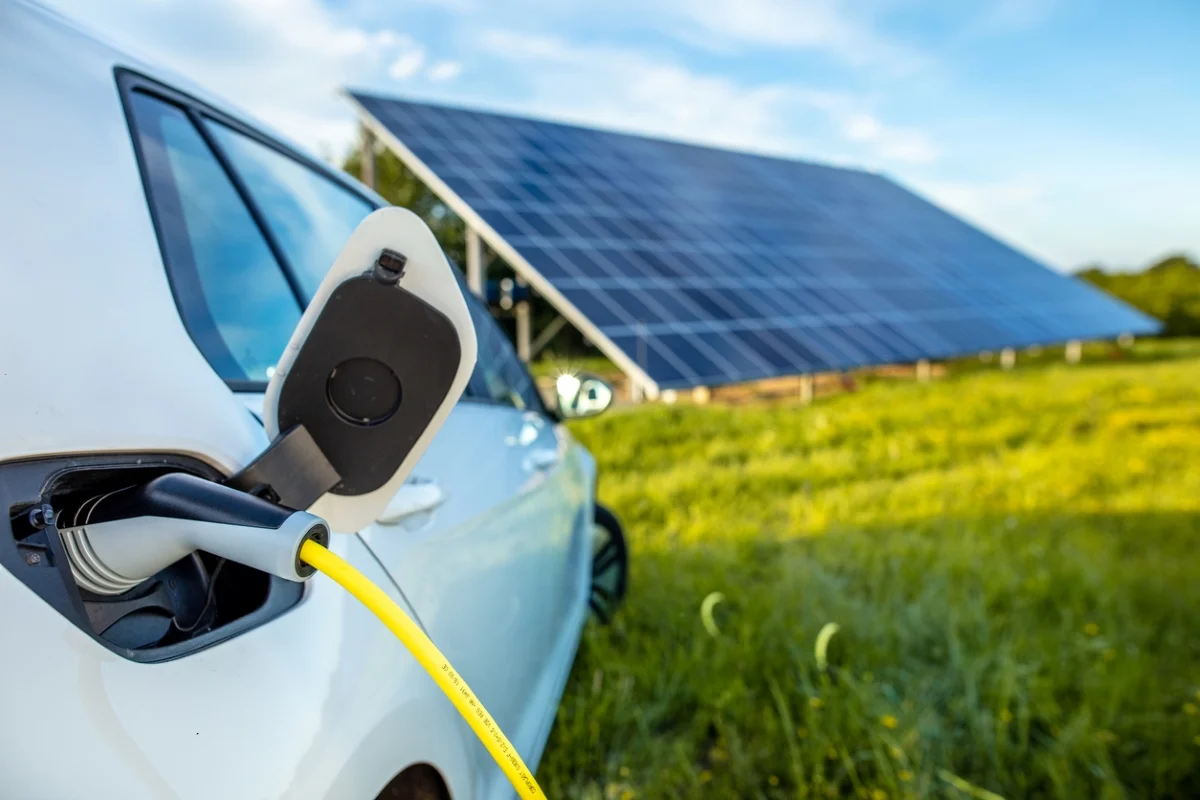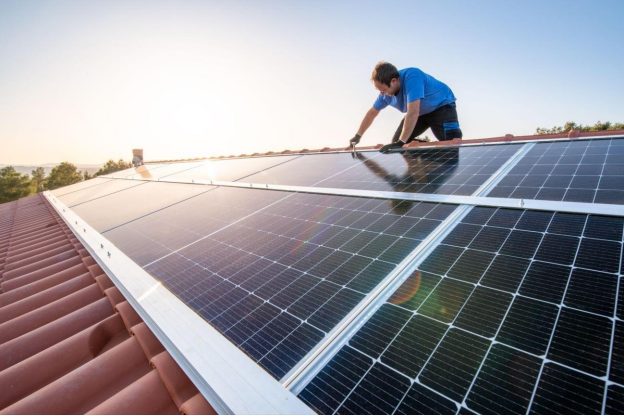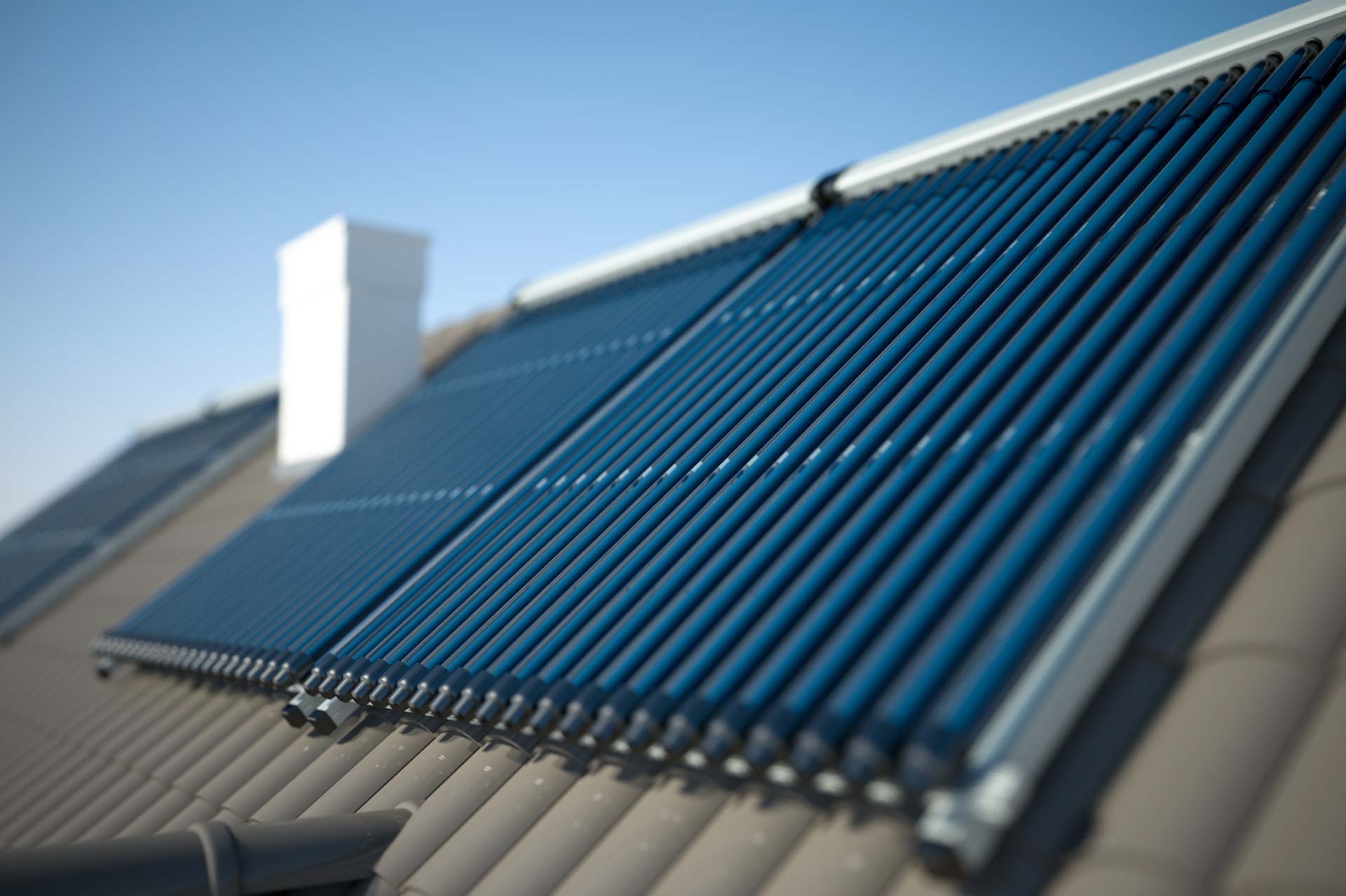- Solar thermal panels can save you £1,350 over their lifetime
- A typical solar thermal system costs £4,000
- You’ll also reduce your carbon footprint by 6.6 tonnes of CO2, on average
Solar thermal panels present an eco-friendly solution to reduce your energy costs, fulfilling approximately 50% of your water-heating needs. Explore our solar panel cost page to compare the prices of solar thermal and solar PV systems.
Discover all you need to know about embracing thermal energy, encompassing panel functionality to the prospective return on your investment in our comprehensive guide.
To assess the viability of solar panels as an investment for your specific circumstances, fill out this form to receive complimentary quotes from trustworthy suppliers.
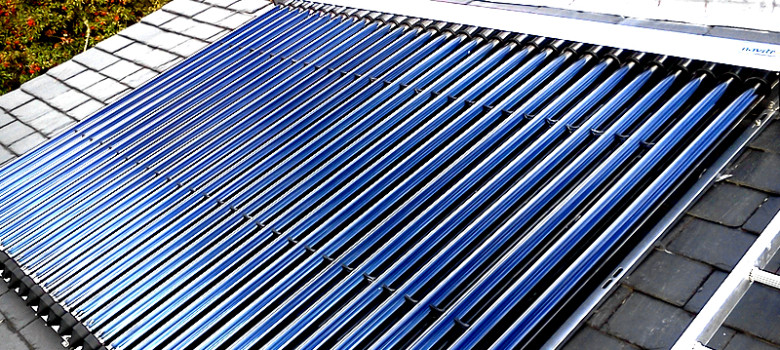
What's on this page?
What are solar thermal panels?
Positioned atop your home’s roof, solar thermal panels harness the sun’s rays and convert them into hot water to meet your household needs.
Serving as the water-heating counterpart to solar PV panels, these thermal panels share a comparable size. They capture the infrared portion of sunlight, transforming it into heat that warms the liquid within the panels, usually a mixture of water and glycol.
The heated fluid circulates through your pipes, consistently warming incoming cold water from the mains. This efficient process fills your hot water cylinder, ensuring an ample supply for activities such as showering, laundry, and more.
Importantly, the integration of solar thermal panels into traditional boiler or immersion heater systems is a relatively straightforward procedure.
Furthermore, solar thermal panels typically come at a more affordable price compared to photovoltaic (PV) panels.
There are also solar PV panels that generate heat as well as electricity. These are called hybrid solar panels. You can find out more by going to our page.
Do solar thermal panels work in the UK?
Solar thermal panels prove effective in the UK, and concerns about cloudy skies are unnecessary. These panels can function even under overcast conditions, as the sun’s radiation penetrates through clouds.
During the summer, solar thermal panels are anticipated to meet approximately 90% of your hot water needs, but this percentage decreases to around 25% in winter, as indicated by the Energy Saving Trust (EST).
While thermal panels make a positive impact, their limited output suggests the necessity for an additional hot water source during periods of insufficient sunlight. A boiler or immersion heater can effectively fill this role, maximizing solar energy utilization to both save costs and contribute to environmental conservation.
Considering that 82% of individuals have adjusted their home behavior in the past year to reduce energy expenses, the popularity of solar thermal panels is likely to continue its upward trajectory.
Want to learn more? Check out our helpful guide Can Solar Panels Heat A House In The UK?
How much do solar thermal panels cost?
Following this initial investment, you can commence the process of lowering your bills and lessening your environmental footprint by tapping into a continuous supply of sunlight. This differs from traditional heating systems, such as gas boilers, which essentially act as carbon-emitting financial burdens until they experience malfunctions.
What’s the return on investment from solar thermal?
The anticipated investment for a solar thermal panel system is around £4,000 for an average homeowner, yielding a return of £1,350 over the subsequent 25 years. Nevertheless, it’s crucial to recognize that achieving cost parity with a gas boiler is not assured. Let’s explore the methodology underpinning these calculations.
Solar thermal panels will cut your hot water bills by 50% on average, according to government research.
So a typical household expends 1,460 kWh per year on hot water – but your solar thermal panels can supply half of this figure.
With the gas price currently at 10.3p per kWh, those of you with a gas boiler could save £75 per year by supplying 730 kWh of your hot water with clean, sun-fuelled energy.
Certainly, the augmentation of savings is possible by integrating extra panels, as each additional square meter contributes to increased cost-effectiveness.
Furthermore, over this duration, you will diminish your carbon footprint by 6.6 tonnes, reflecting a significant environmental benefit.
It’s noteworthy that the government’s Renewable Heat Incentive (RHI), which could have further boosted savings for owners of solar thermal panels, concluded in March 2022.
Are there any government grants for solar thermal?
Commencing April 2022, government grants for solar thermal systems will no longer be available.
The Renewable Heat Incentive, a prominent government grant supporting solar thermal systems, has been a primary program recently. This initiative rewarded owners with 10.92p per kWh generated from solar thermal heating, biomass boilers, or heat pumps. Unfortunately, it has been discontinued and will not continue beyond March 2022.
The subsequent program, the Boiler Upgrade Scheme, does not provide any discounts or payments for households opting for solar thermal systems.
The government has specified that the scheme is focused on systems that achieve maximum carbon savings. Consequently, eligibility is contingent upon whether a technology can meet the complete space and water heating requirements of the property.
On a positive note, integrating solar thermal heating into your property does not disqualify you from grants associated with heat pumps or biomass boilers.
The Green Homes Grant, amounting to £2 billion, aimed to substantially alleviate the costs of installing renewable technologies, including solar thermal panels, by up to two-thirds. However, this initiative encountered challenges and was discontinued in March 2021.
How popular is solar thermal in the UK?
In 2020, 1,569 m² of solar thermal infrastructure was installed in the UK, according to the International Energy Agency (IEA).
For the ninth consecutive year, solar thermal installations in the country have witnessed a decline, primarily attributed to the impact of the Feed-In Tariff. This government scheme, operational from April 2010 to March 2019, provided incentives to individuals installing solar panels by offering payments for generated solar electricity. The initial generosity of these payments led to a significant shift from solar thermal to solar PV installations among UK homeowners. As a result, solar thermal installations dropped from 90,000 m² in 2010 to a mere 1.7% of that total in 2020. With the conclusion of the Feed-In Tariff, the playing field has been leveled, and the International Energy Agency (IEA) foresees a resurgence in solar thermal installations.
Summary
Opting for a solar thermal system is an excellent way to reduce dependence on fossil fuels by utilizing sunlight to heat a substantial portion of your hot water. Although attaining a full financial return may be challenging, it’s important to recognize that achieving cost parity with a new gas boiler presents similar difficulties. Nevertheless, choosing a solar thermal system enables you to actively contribute to mitigating the impacts of climate change. To explore the potential cost of solar panels for your home, just fill out the form below and receive complimentary quotes from our trusted suppliers.
Get FREE Solar Quotes
Find out how much a solar solution would cost you
Complete A Short Form – Receive Free Quotes – Compare & Save
Get FREE Solar Quotes
Find out how much a solar solution would cost you
Complete A Short Form – Receive Free Quotes – Compare & Save



